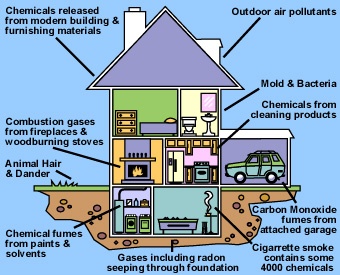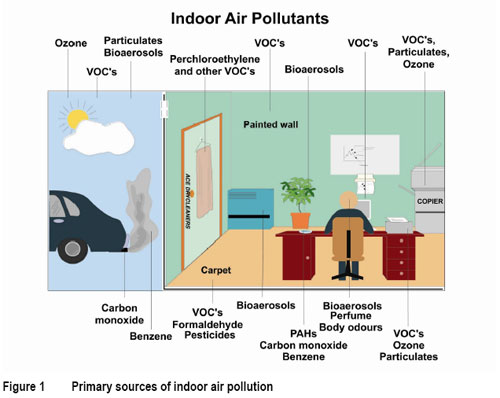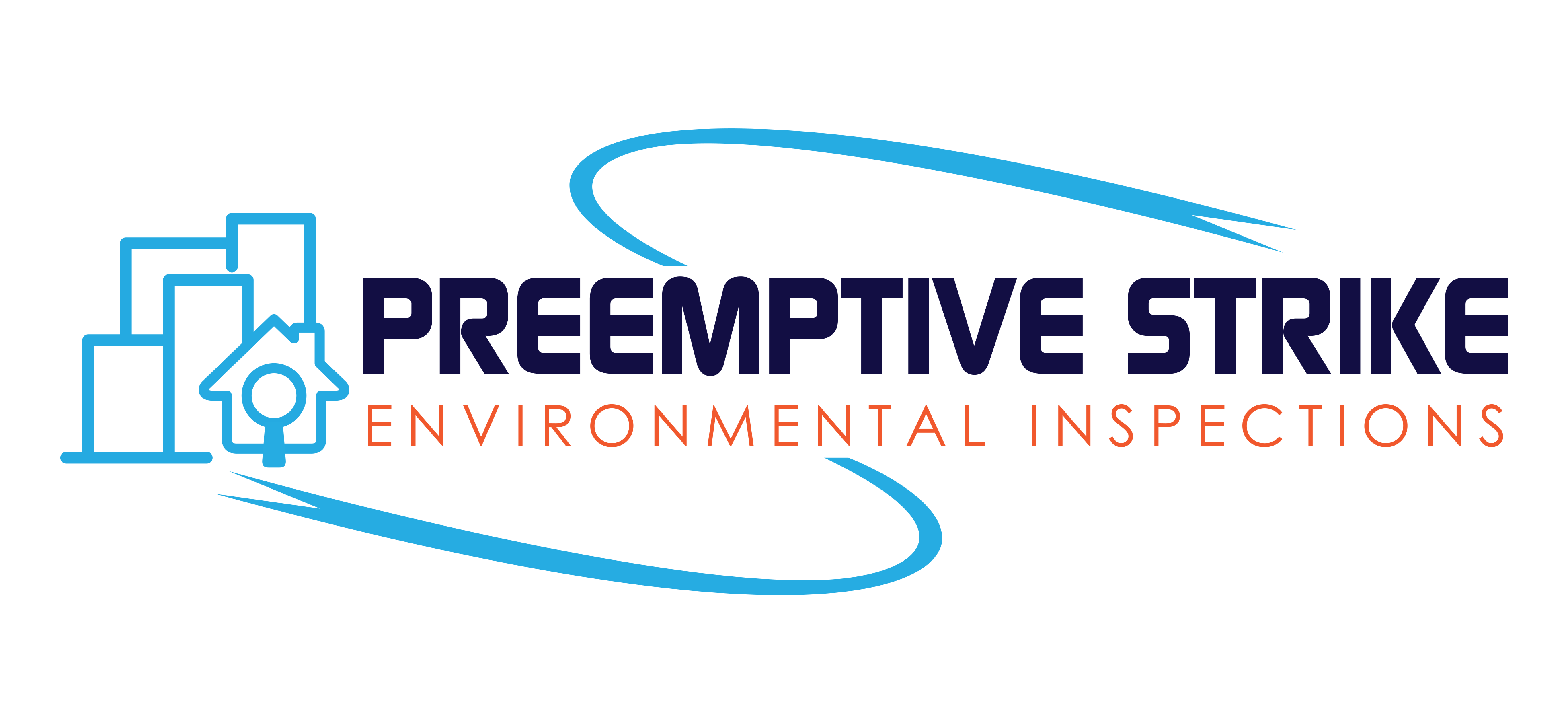What is Indoor Air Quality (IAQ)?
Indoor Air Quality (IAQ) refers to the air quality within and around buildings and structures, especially as it relates to the health and comfort of building occupants. Understanding and controlling common pollutants indoors can help reduce your risk of indoor health concerns. Health effects from indoor air pollutants may be experienced soon after exposure or, possibly, years later.

Why Choose Preemptive Strike?
We are an American Council for Accredited Certification (ACAC) Council-certified Indoor Environmental Consultant equipped to provide Indoor Air Quality (IAQ) testing, investigations, and consulting.
Services Provided
Inspections
- Office IAQ
- Residential IAQ
- Odor Investigation
- Pre Renovation
- Pre Demolition
- Post Abatement Clearance
- Due Diligence (Pre Purchase, Refinance, etc.)
General Testing
- Air Testing
General Services
- Project Consulting
- Project Oversight
- Project Coordination
- Project Risk Management
- Project Hazard Assessments
- Peer Review
Indoor Air Pollution
Sources



Why is it Important?

Immediate Effects
Some health effects may show up shortly after a single exposure or repeated exposures to a pollutant. These include irritation of the eyes, nose, and throat, headaches, dizziness, and fatigue. Such immediate effects are usually short-term and treatable. Sometimes the treatment is simply eliminating the person's exposure to the source of the pollution, if it can be identified. Soon after exposure to some indoor air pollutants, symptoms of some diseases such as asthma may show up, be aggravated or worsened.
The likelihood of immediate reactions to indoor air pollutants depends on several factors including age and preexisting medical conditions. In some cases, whether a person reacts to a pollutant depends on individual sensitivity, which varies tremendously from person to person. Some people can become sensitized to biological or chemical pollutants after repeated or high level exposures.
Certain immediate effects are similar to those from colds or other viral diseases, so it is often difficult to determine if the symptoms are a result of exposure to indoor air pollution. For this reason, it is important to pay attention to the time and place symptoms occur. If the symptoms fade or go away when a person is away from the area, for example, an effort should be made to identify indoor air sources that may be possible causes. Some effects may be made worse by an inadequate supply of outdoor air coming indoors or from the heating, cooling or humidity conditions prevalent indoors.
Long-Term Effects
Other health effects may show up either years after exposure has occurred or only after long or repeated periods of exposure. These effects, which include some respiratory diseases, heart disease and cancer, can be severely debilitating or fatal. It is prudent to try to improve the indoor air quality in your home even if symptoms are not noticeable.
While pollutants commonly found in indoor air can cause many harmful effects, there is considerable uncertainty about what concentrations or periods of exposure are necessary to produce specific health problems. People also react very differently to exposure to indoor air pollutants. Further research is needed to better understand which health effects occur after exposure to the average pollutant concentrations found in homes and which occurs from the higher concentrations that occur for short periods of time.
Facts Library
There are three basic strategies to improve indoor air quality:
Source Control
Improved Ventilation
Air cleaners
Source Control
Usually the most effective way to improve indoor air quality is to eliminate individual sources of pollution or to reduce their emissions.
Some sources, like those that contain asbestos, can be sealed or enclosed; others, like gas stoves, can be adjusted to decrease the amount of emissions. In many cases, source control is also a more cost-efficient approach to protecting indoor air quality than increasing ventilation because increasing ventilation can increase energy costs.
Ventilation Improvements
For most indoor air quality problems in the home, source control is the most effective solution.
Another approach to lowering the concentrations of indoor air pollutants in your home is to increase the amount of outdoor air coming indoors.
Most home heating and cooling systems, including forced air heating systems, do not mechanically bring fresh air into the house. Opening windows and doors, operating window or attic fans, when the weather permits, or running a window air conditioner with the vent control open increases the outdoor ventilation rate. Local bathroom or kitchen fans that exhaust outdoors remove contaminants directly from the room where the fan is located and also increase the outdoor air ventilation rate.
It is particularly important to take as many of these steps as possible while you are involved in short-term activities that can generate high levels of pollutants — for example, painting, paint stripping, heating with kerosene heaters, cooking, or engaging in maintenance and hobby activities such as welding, soldering, or sanding. You might also choose to do some of these activities outdoors, if you can and if weather permits.
Advanced designs of new homes are starting to feature mechanical systems that bring outdoor air into the home. Some of these designs include energy-efficient heat recovery ventilators (also known as air-to-air heat exchangers).
Ventilation and shading can help control indoor temperatures. Ventilation also helps remove or dilute indoor airborne pollutants coming from indoor sources. This reduces the level of contaminants and improves indoor air quality (IAQ). Carefully evaluate using ventilation to reduce indoor air pollutants where there may be outdoor sources of pollutants, such as smoke or refuse, nearby.
The introduction of outdoor air is one important factor in promoting good air quality. Air may enter a home in several different ways, including:
through natural ventilation, such as through windows and doors
through mechanical means, such as through outdoor air intakes associated with the heating, ventilation and air conditioning (HVAC) system
through infiltration, a process by which outdoor air flows into the house through openings, joints and cracks in walls, floors and ceilings, and around windows and doors.
Infiltration occurs in all homes to some extent.
Natural ventilation describes air movement through open windows and doors. If used properly natural ventilation can at times help moderate the indoor air temperature, which may become too hot in homes without air-conditioning systems or when power outages or brownouts limit or make the use of air conditioning impossible.
Natural ventilation can also improve indoor air quality by reducing pollutants that are indoors. Examples of natural ventilation are:
opening windows and doors
window shading such as closing the blinds
Most residential forced air-heating systems and air-conditioning systems do not bring outdoor air into the house mechanically, and infiltration and natural ventilation are relied upon to bring outdoor air into the home. Advanced designs for new homes are starting to add a mechanical feature that brings outdoor air into the home through the HVAC system. Some of these designs include energy efficient heat recovery ventilators to mitigate the cost of cooling and heating this air during the summer and winter.
Air Cleaners
There are many types and sizes of air cleaners on the market, ranging from relatively inexpensive table-top models to sophisticated and expensive whole-house systems. Some air cleaners are highly effective at particle removal, while others, including most table-top models, are much less so. Air cleaners are generally not designed to remove gaseous pollutants.
Learn more about air cleaners
The effectiveness of an air cleaner depends on how well it collects pollutants from indoor air (expressed as a percentage efficiency rate) and how much air it draws through the cleaning or filtering element (expressed in cubic feet per minute).
A very efficient collector with a low air-circulation rate will not be effective, nor will a cleaner with a high air-circulation rate but a less efficient collector. The long-term performance of any air cleaner depends on maintaining it according to the manufacturer's directions.
Another important factor in determining the effectiveness of an air cleaner is the strength of the pollutant source. Table-top air cleaners, in particular, may not remove satisfactory amounts of pollutants from strong nearby sources. People with a sensitivity to particular sources may find that air cleaners are helpful only in conjunction with concerted efforts to remove the source.
Over the past few years, there has been some publicity suggesting that houseplants have been shown to reduce levels of some chemicals in laboratory experiments. There is currently no evidence, however, that a reasonable number of houseplants remove significant quantities of pollutants in homes and offices. Indoor houseplants should not be over-watered because overly damp soil may promote the growth of microorganisms which can affect allergic individuals.
At present, EPA does not recommend using air cleaners to reduce levels of radon and its decay products. The effectiveness of these devices is uncertain because they only partially remove the radon decay products and do not diminish the amount of radon entering the home. EPA plans to do additional research on whether air cleaners are, or could become, a reliable means of reducing the health risk from radon.
